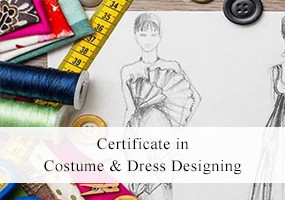Design and Development for Visually Impaired Person: Innovations in Assistive Technology

In today's world, exclusivity is essential, and the fashion industry is no exception. Designing and developing products for visually impaired individuals requires a unique approach, considering various factors to ensure accessibility and usability. Visual impairment is a significant disability that affects millions of people worldwide. According to the World Health Organization, there are approximately 285 million visually impaired people worldwide, out of which 39 million are completely blind. Visual impairment makes it challenging for individuals to perform daily activities independently and can lead to a loss of confidence and independence. One of the major challenges for visually impaired people is to recognize colors, which is a key aspect of daily living. To address this issue, researchers have developed a Vision Shirt that can help the visually impaired identify colors. Another good news is that Assistive Technology is continuously advancing, making it easier for visually challenged individuals to live more independently. In this article, we will explore the design and development of assistive technology and Vision Shirt for visually impaired individuals.
Color Relevance: Understanding the Problem

Seeing Beyond Colors: The Importance of Seven Colors for Visually Impaired Individuals

Designing the Vision Shirt, Testing and Refining the Design
The Vision Shirt is a wearable device that uses color sensors to detect the colors of objects. The shirt is designed to be comfortable and easy to wear. It has sensors embedded in the fabric, which are connected to a microcontroller that processes the data and provides feedback to the wearer. The shirt also has an audio output that can be used to communicate color information to the user. The development of the Vision Shirt involved several design considerations. One of the primary considerations was the selection of the color sensors. The sensors needed to be sensitive enough to detect a wide range of colors and provide accurate color information. Another consideration was the design of the shirt itself. It needed to be comfortable and unobtrusive, and the sensors had to be strategically placed to ensure they could detect colors accurately. The shirt was designed to be battery-powered, with the battery pack located in a pocket on the shirt. The microcontroller was also placed in this pocket, along with the audio output device. The shirt was designed to be washable, with the sensors and electronics safely embedded in the fabric. Once the initial design was complete, the Vision Shirt underwent extensive testing to ensure it was effective and efficient. The testing involved several visually challenged individuals who were asked to identify the colors of various objects using the shirt. The results were promising, with users able to identify colors accurately and independently. However, feedback from the users highlighted a few design issues that needed to be addressed. The placement of the sensors needed to be adjusted to improve accuracy, and the audio output needed to be clearer and louder. These refinements were made to the design, and the shirt was tested again. The final design was effective and efficient, with users able to identify colors accurately and easily.Factors that enhance the shopping experience of Visually Impaired People

Brainly Language is an essential factor that helps them navigate the digital world with ease. Brainly is a type of language that simplifies complex sentences and uses a limited vocabulary, making it easier to understand. Websites and applications that cater to visually impaired individuals use Brainly language to enhance accessibility.
Bold Letters are another factor that helps visually impaired people. In printed materials, bold letters make it easier for them to read, as they stand out from the rest of the text. For online content, designers can use bold font settings to enhance the visibility of headings and subheadings.
Audio Output and Speech Output are two other critical factors that help visually impaired individuals. With audio output, text-based content is converted into an audio format, allowing visually impaired individuals to listen to the content. Similarly, speech output technology can read the content out loud, providing an accessible reading experience.
Pricing Dots over the shopping price tags is another innovative solution that helps visually impaired individuals. Pricing dots are raised, tactile markers that represent the price of an item. These dots are placed on the tag of an item and can be easily felt by visually impaired individuals. This allows them to determine the price of an item independently, without needing assistance.
Revolutionizing Accessibility: The Power of Smart Shirts for Visually Impaired Individuals

In addition to haptic feedback, some smart shirts for visually impaired individuals also incorporate audio feedback. This means that the shirt is equipped with speakers or headphones that can provide verbal information to the wearer. For example, the shirt could be programmed to read out text messages or emails, provide directions, or alert the wearer to approaching obstacles.
Smart shirts for visually impaired individuals come in various styles, designs, and sizes, making them suitable for different occasions and activities. Some are designed specifically for sports and fitness activities, while others are more casual and suitable for everyday wear. The smart technology used in these shirts is typically powered by rechargeable batteries that can last for several hours of continuous use.
Overall, smart shirts for visually impaired individuals are a promising development in the world of assistive technology. They offer a practical and stylish solution for improving accessibility and independence for visually impaired individuals, making it easier for them to navigate their surroundings and stay connected with the world around them.
Fashion Brands Redefining Inclusivity: Designs for Visually Impaired Individuals

| Published On | - | 2023-05-11 |
| Modified On | - | 2023-05-11 |
| Author | - | Drisya S Pradeep |
| Publisher | - | Waves Fashion Institute |
| https://wifd.in//design_and_development_for_visually_impaired_person | ||
| Applauding the Mastermind Author Behind the Words | |
|---|---|
 | Drisya S Pradeep Advanced Diploma in Fashion Designing 2022 - 23 Batch Published: 11 May 2023 |





Verandah, India's first Butterfly Mark certified fashion label, joins elite luxury brands like Louis Vuitton & Christian Dior for sustainable practices.

Explore how Artificial Intelligence (AI) is revolutionizing Fashion Design, enhancing creativity, sustainability and customer experiences.

Learn about Gender-fluid Fashion that transcends traditional gender norms, offering inclusive styles for all identities and fostering self-expression.

Elevate your Ramzan style with the best selection of vibrant dress colors for 2024. Get ready to shine in hues that reflect the essence of the season.